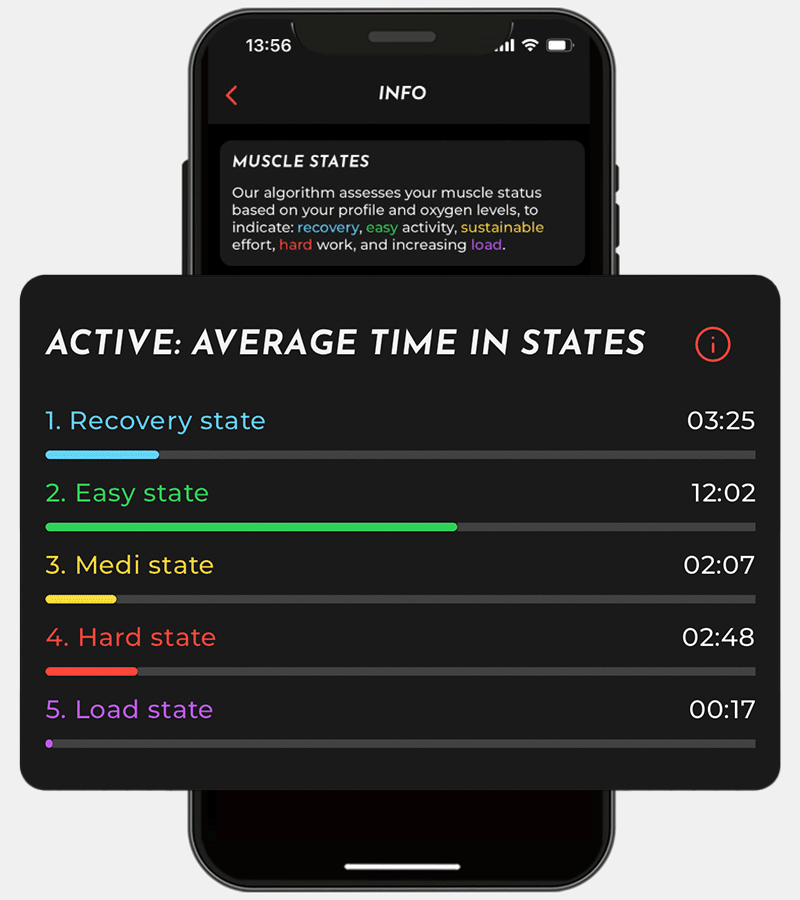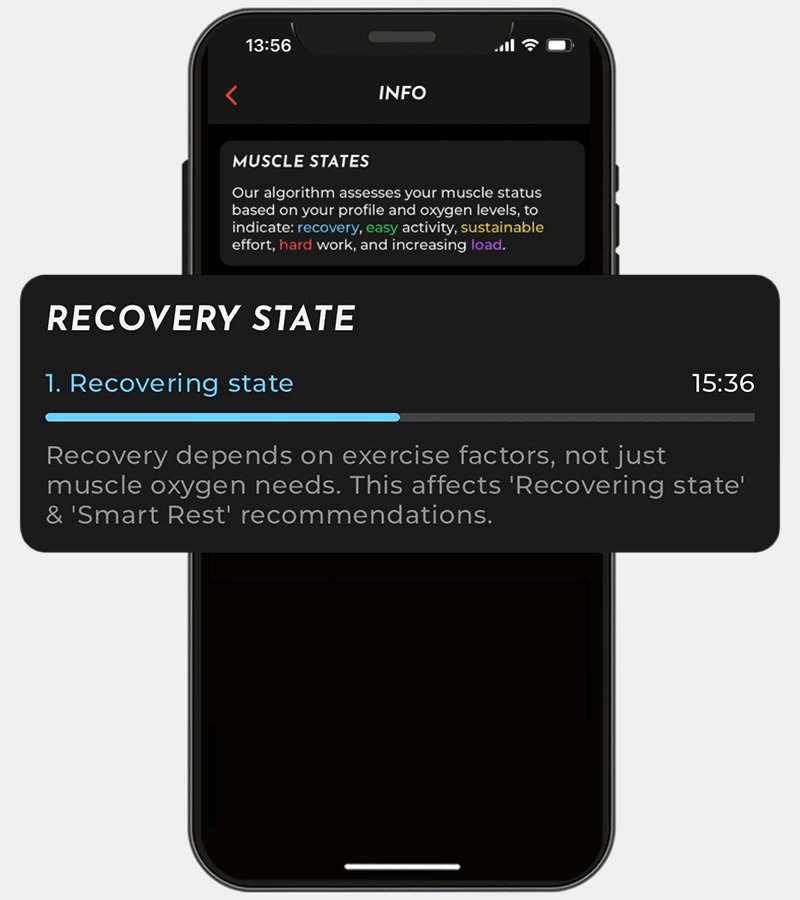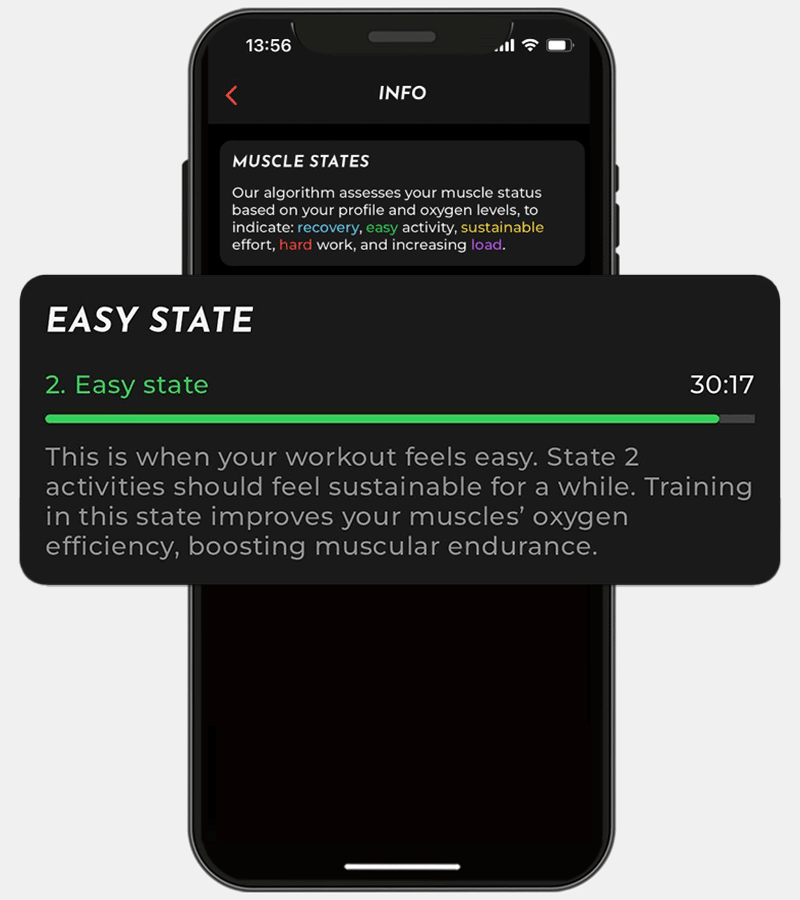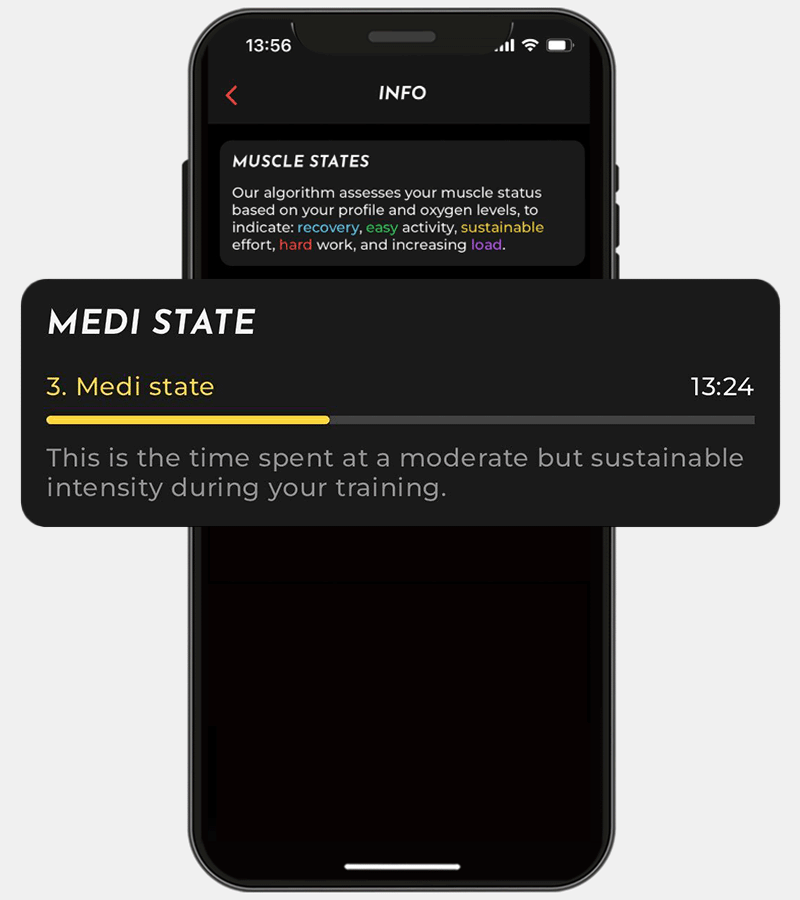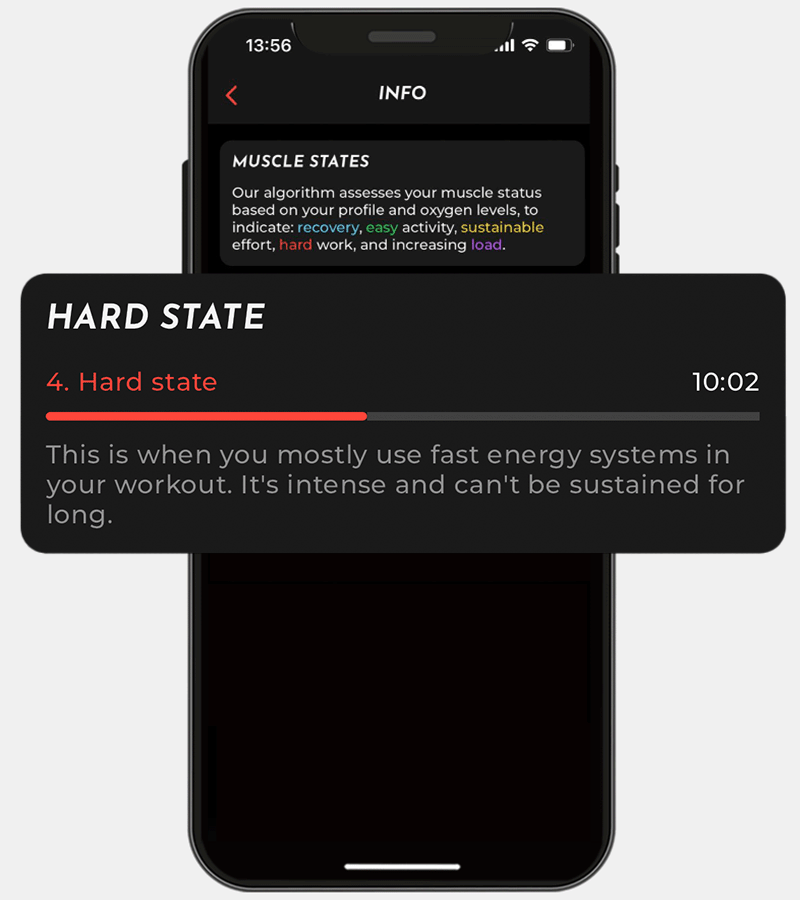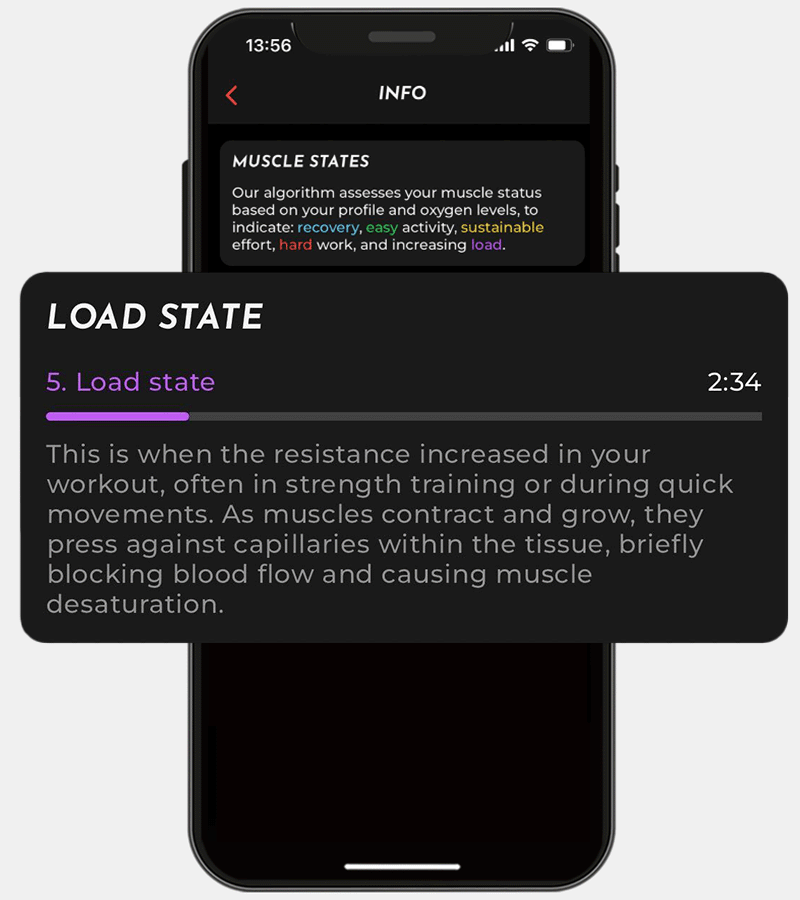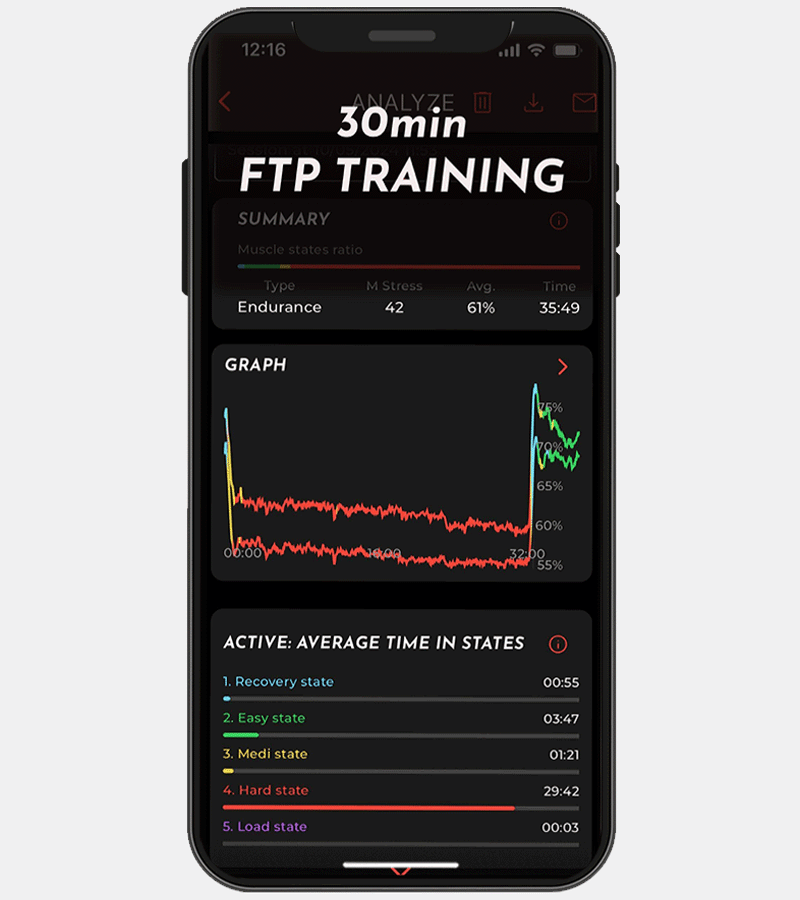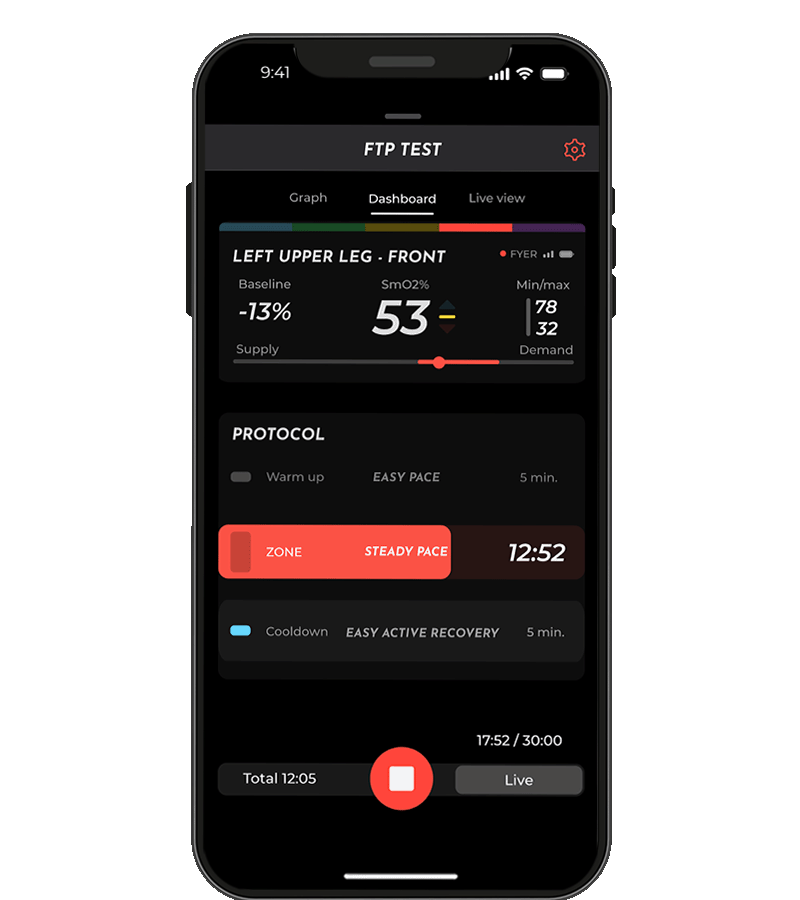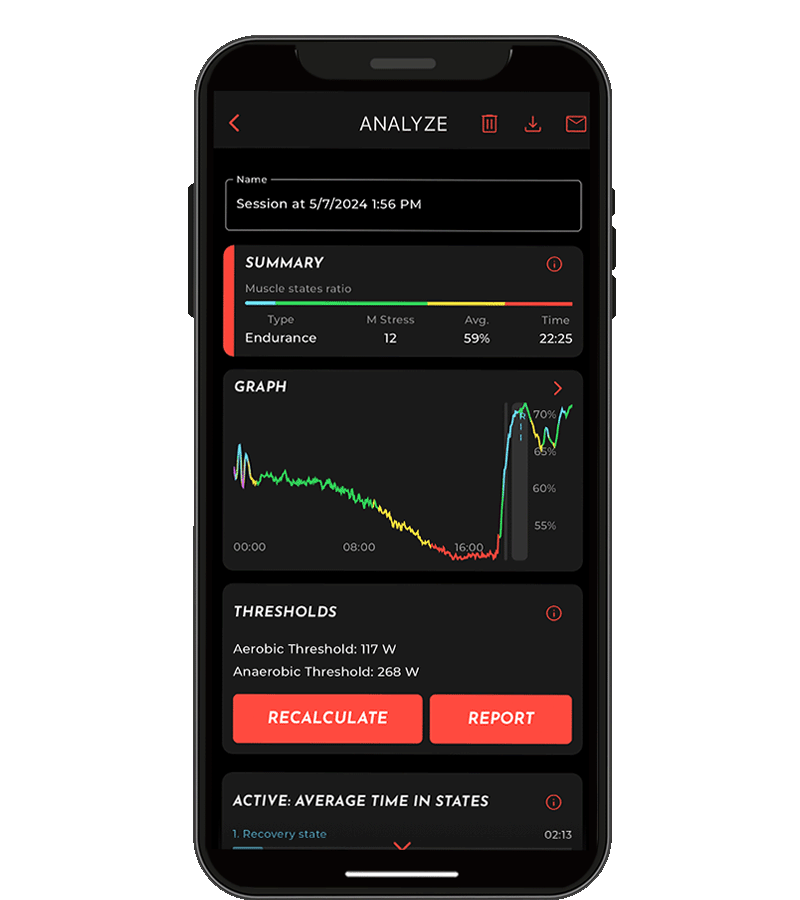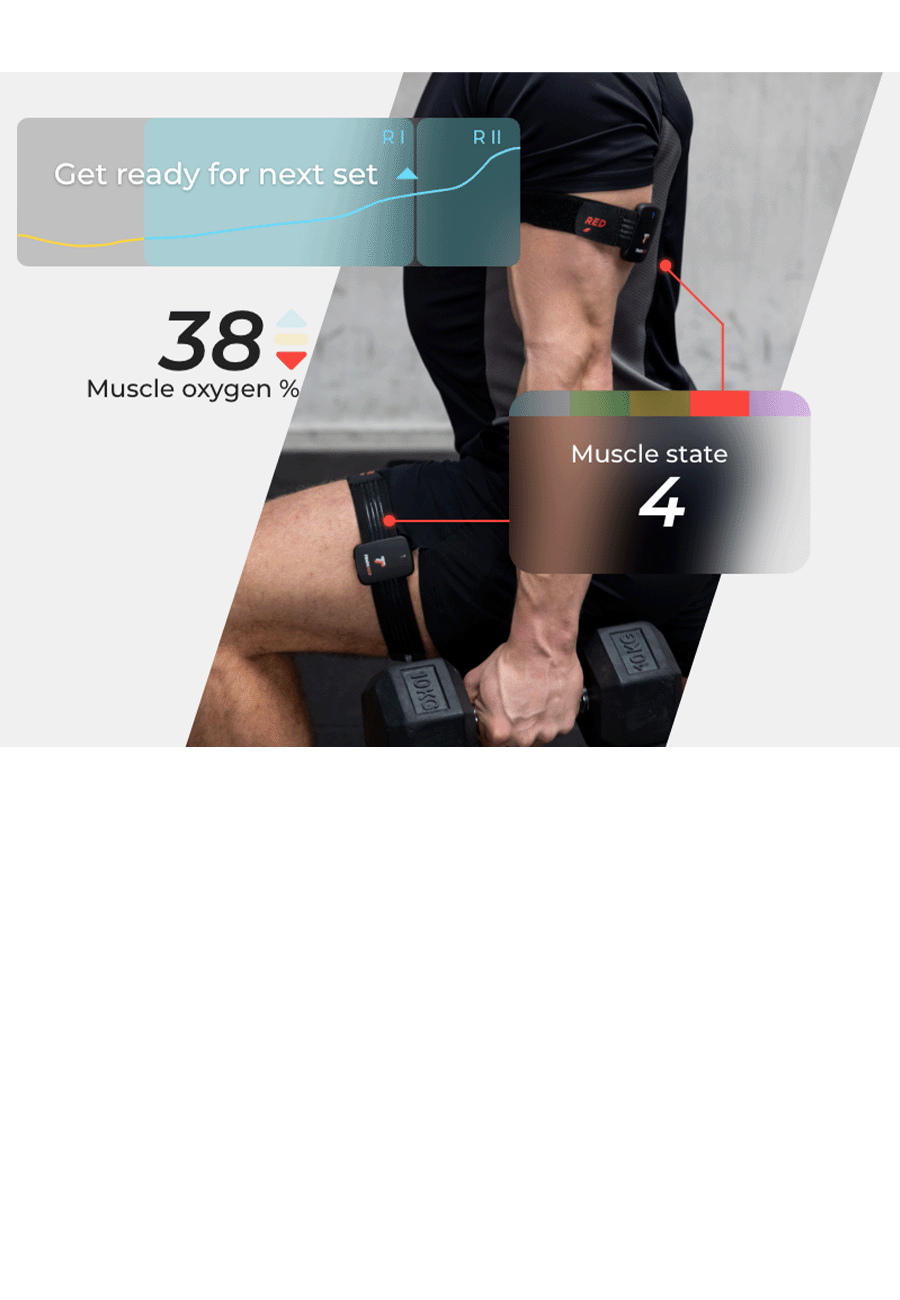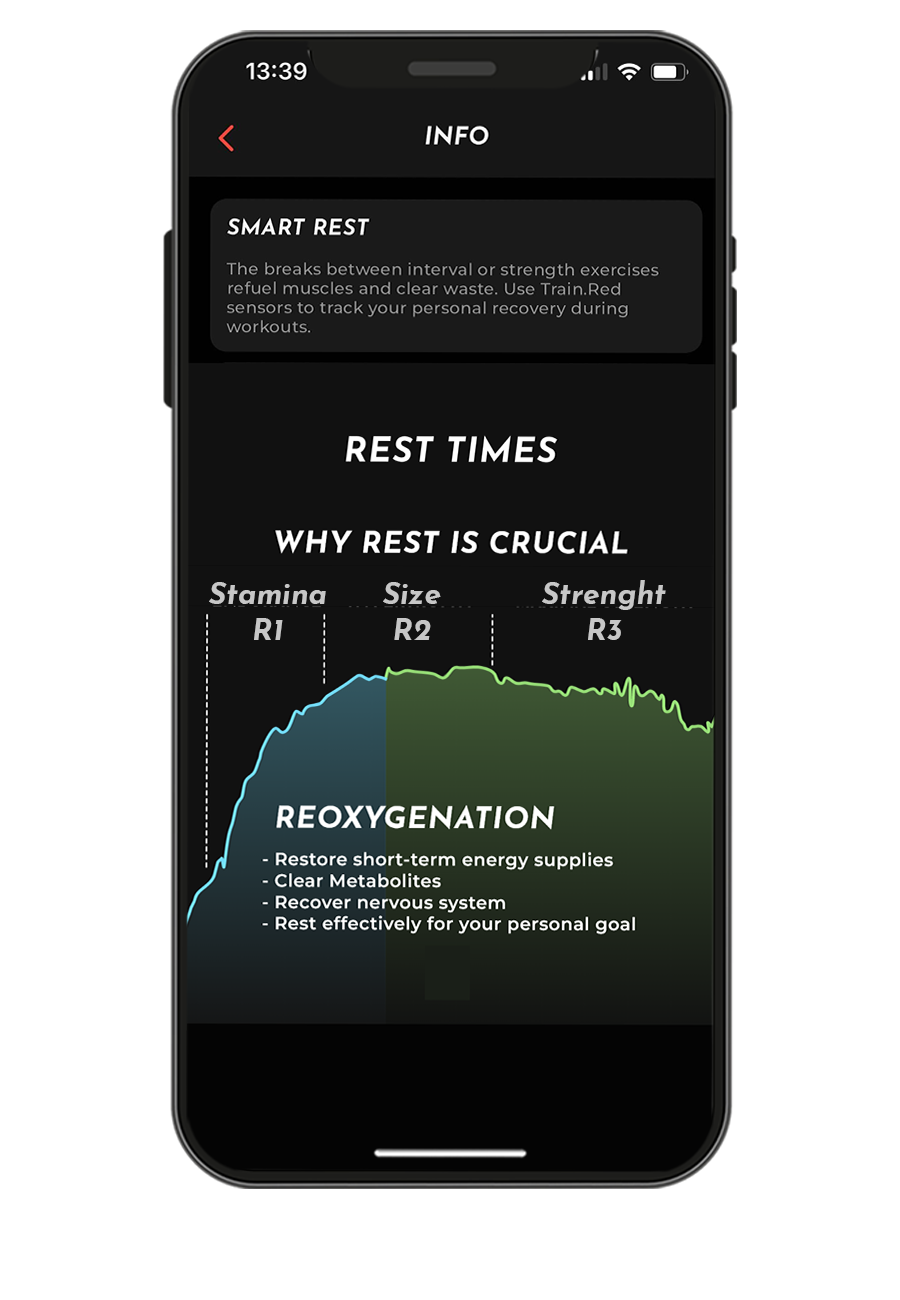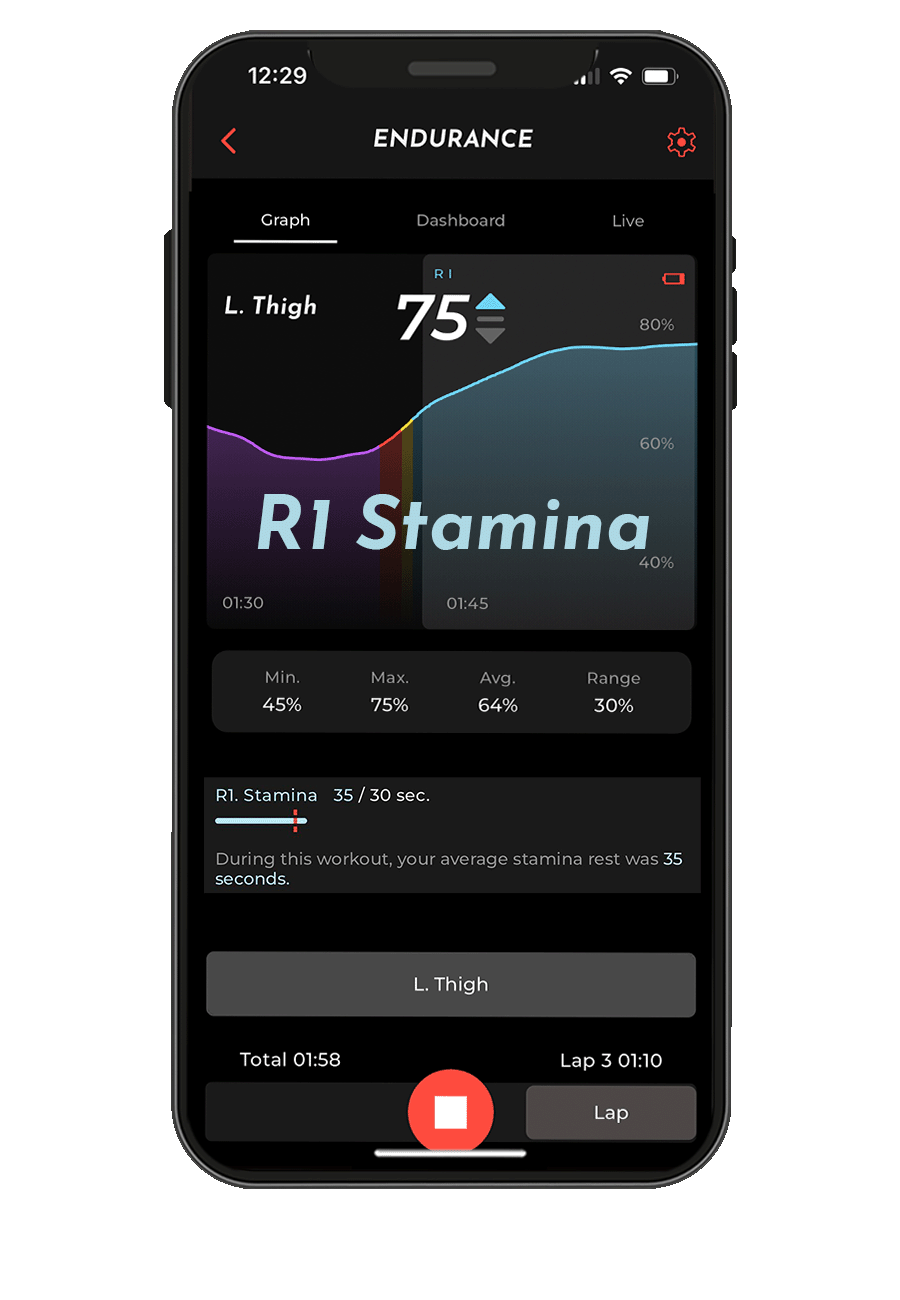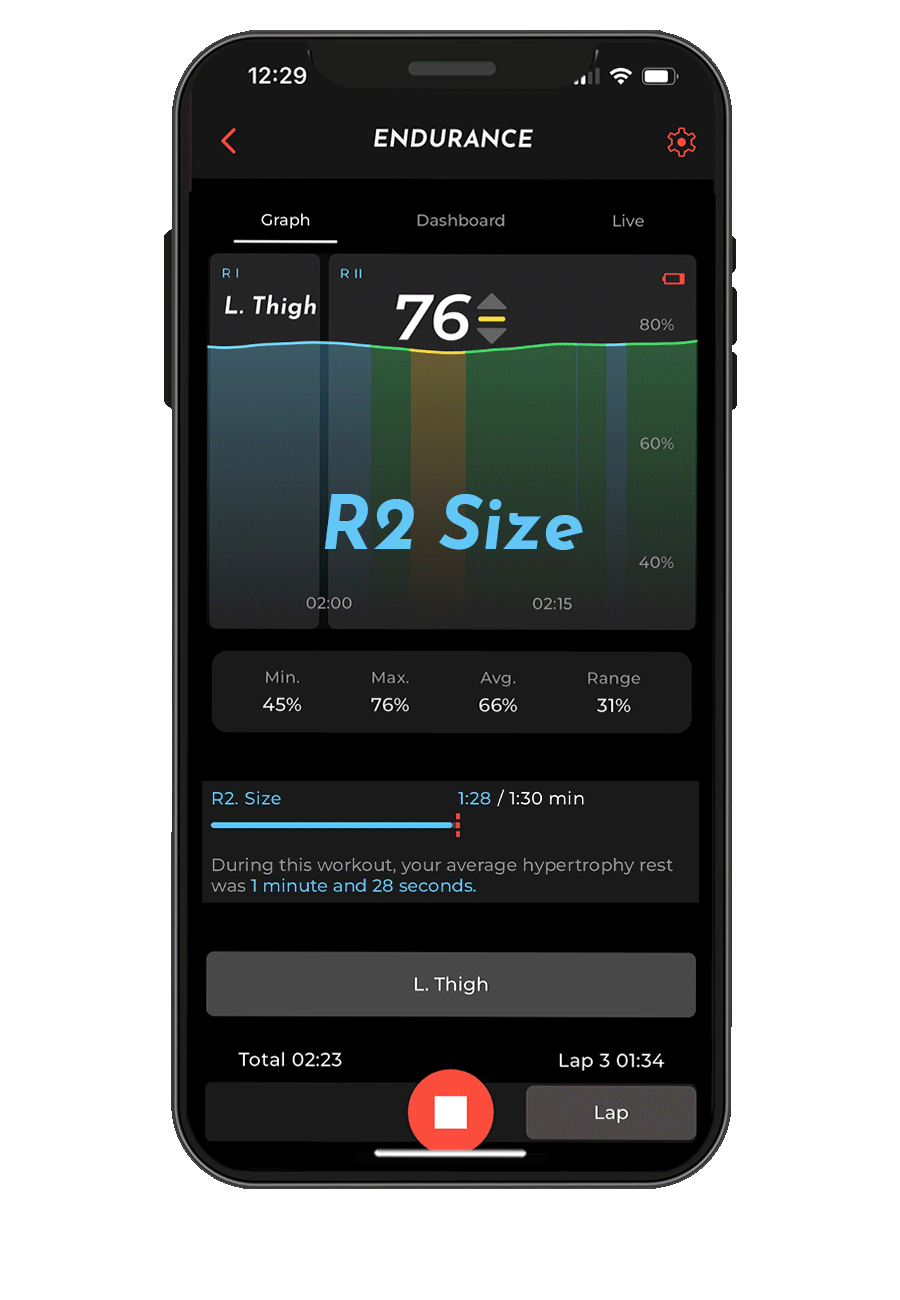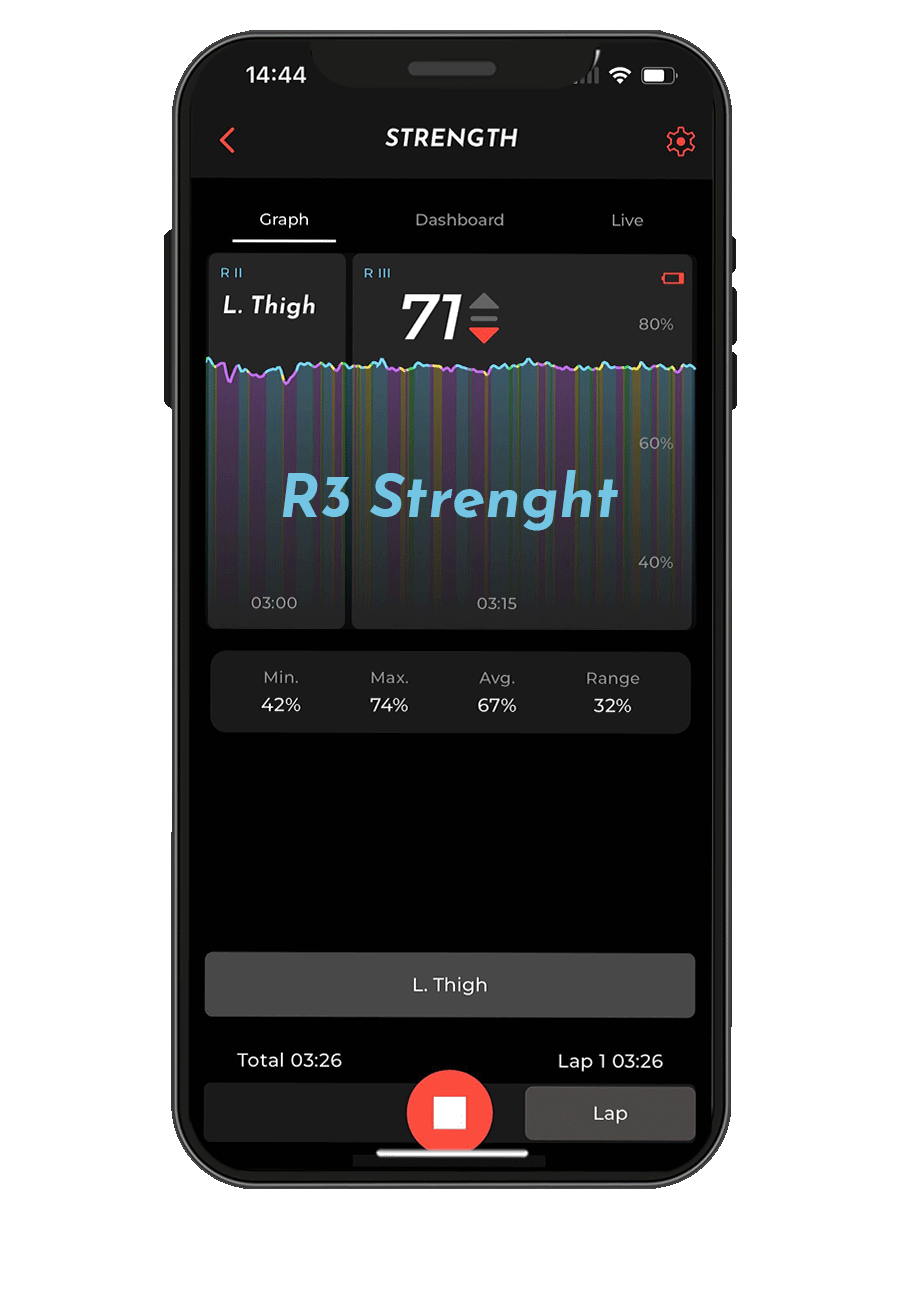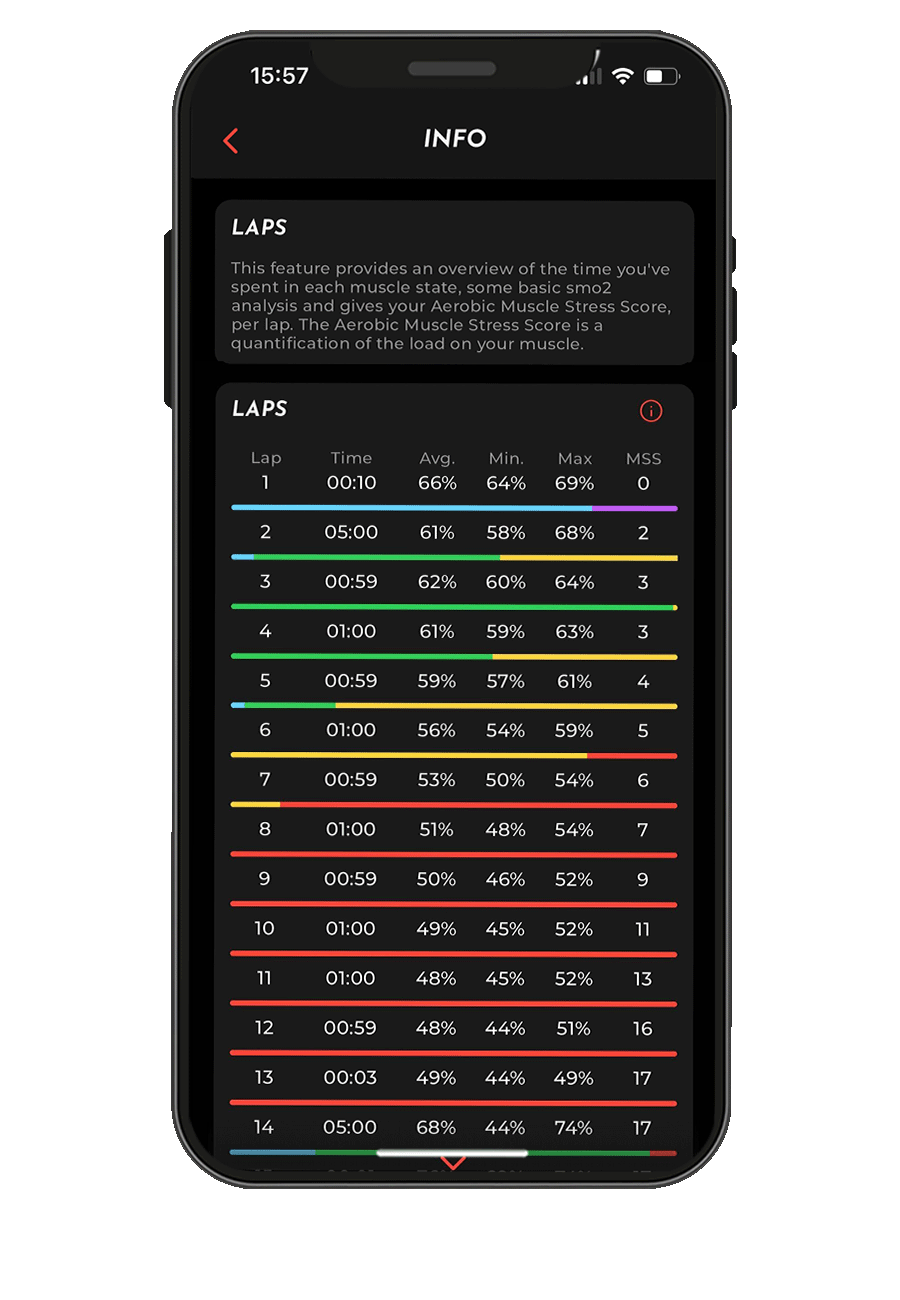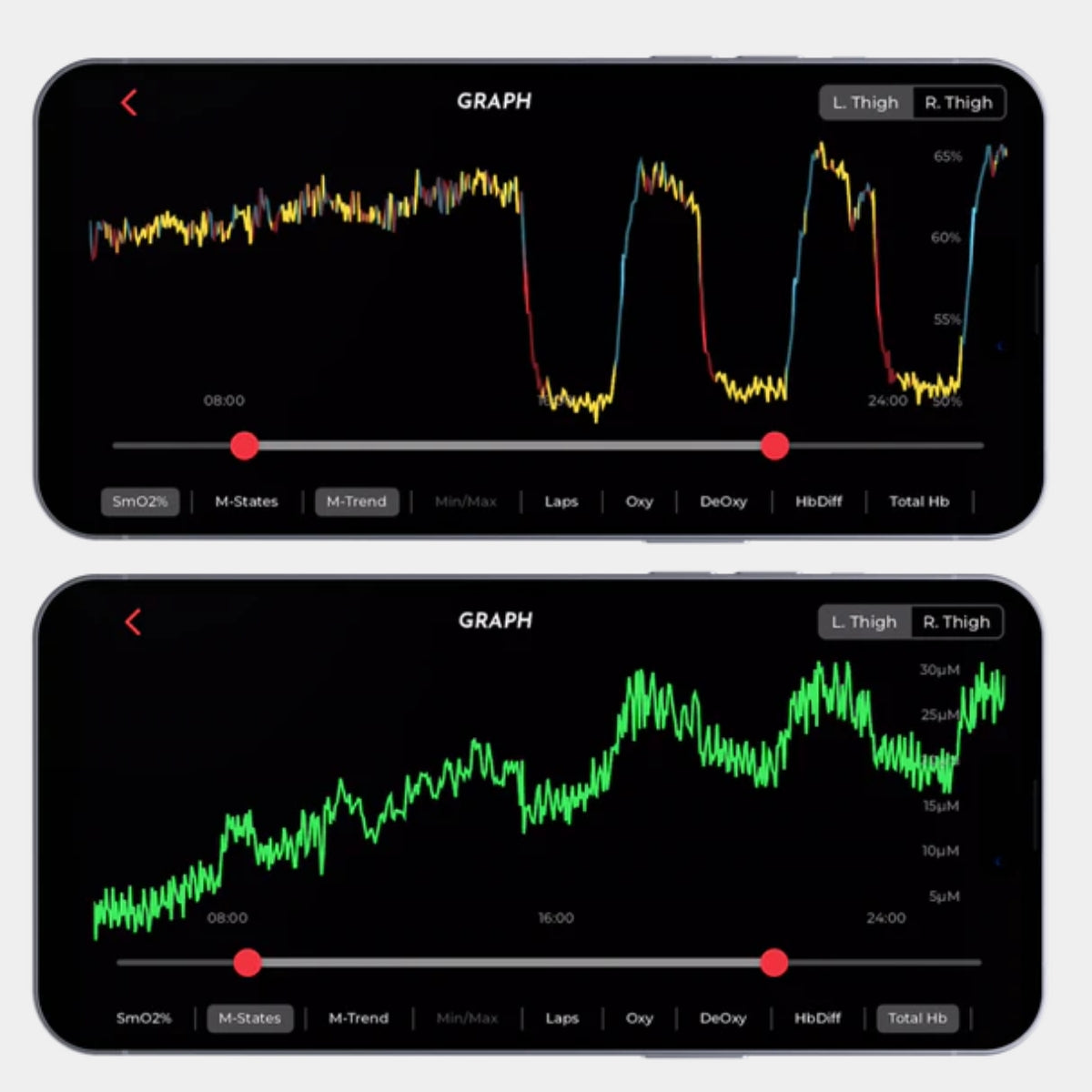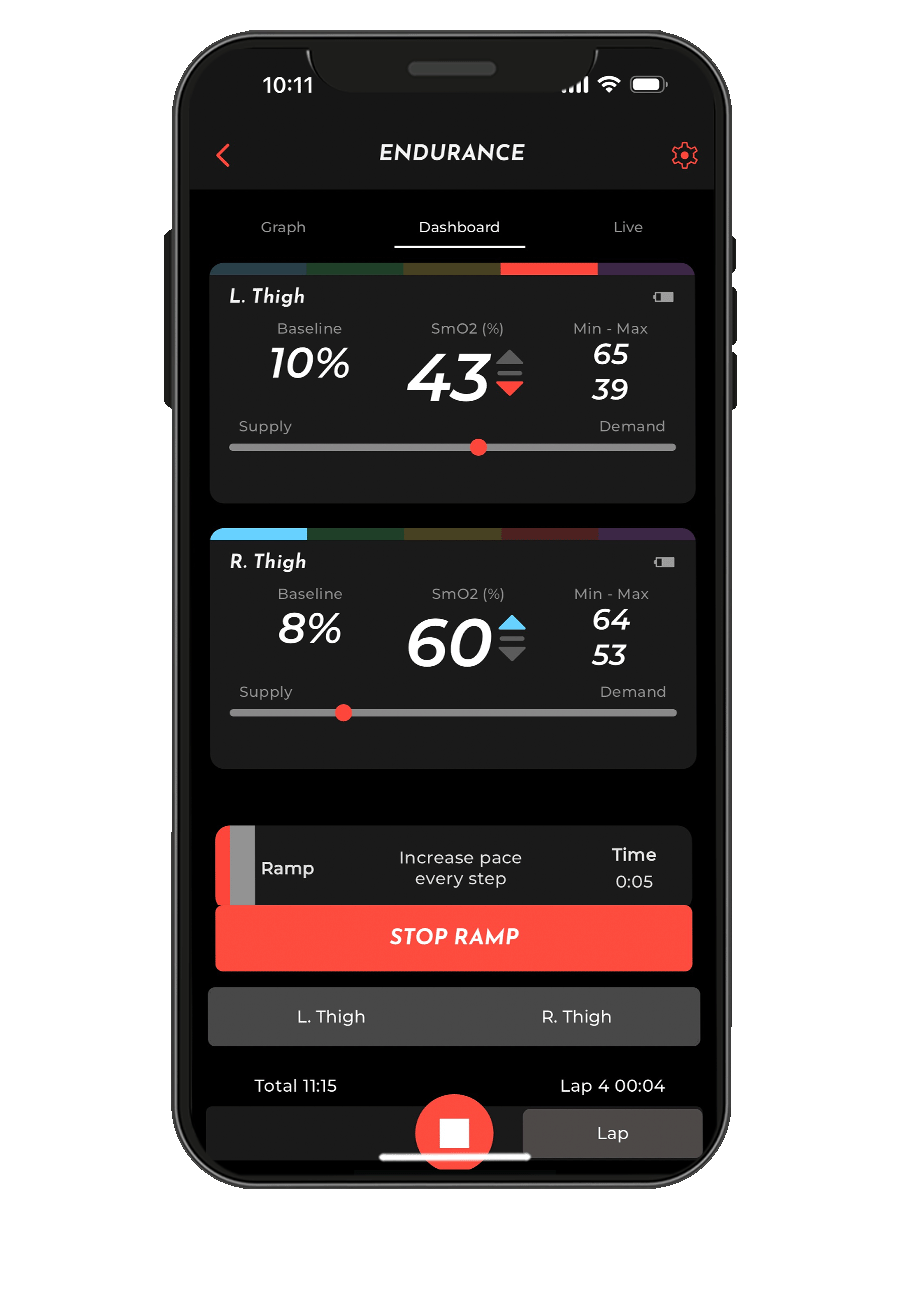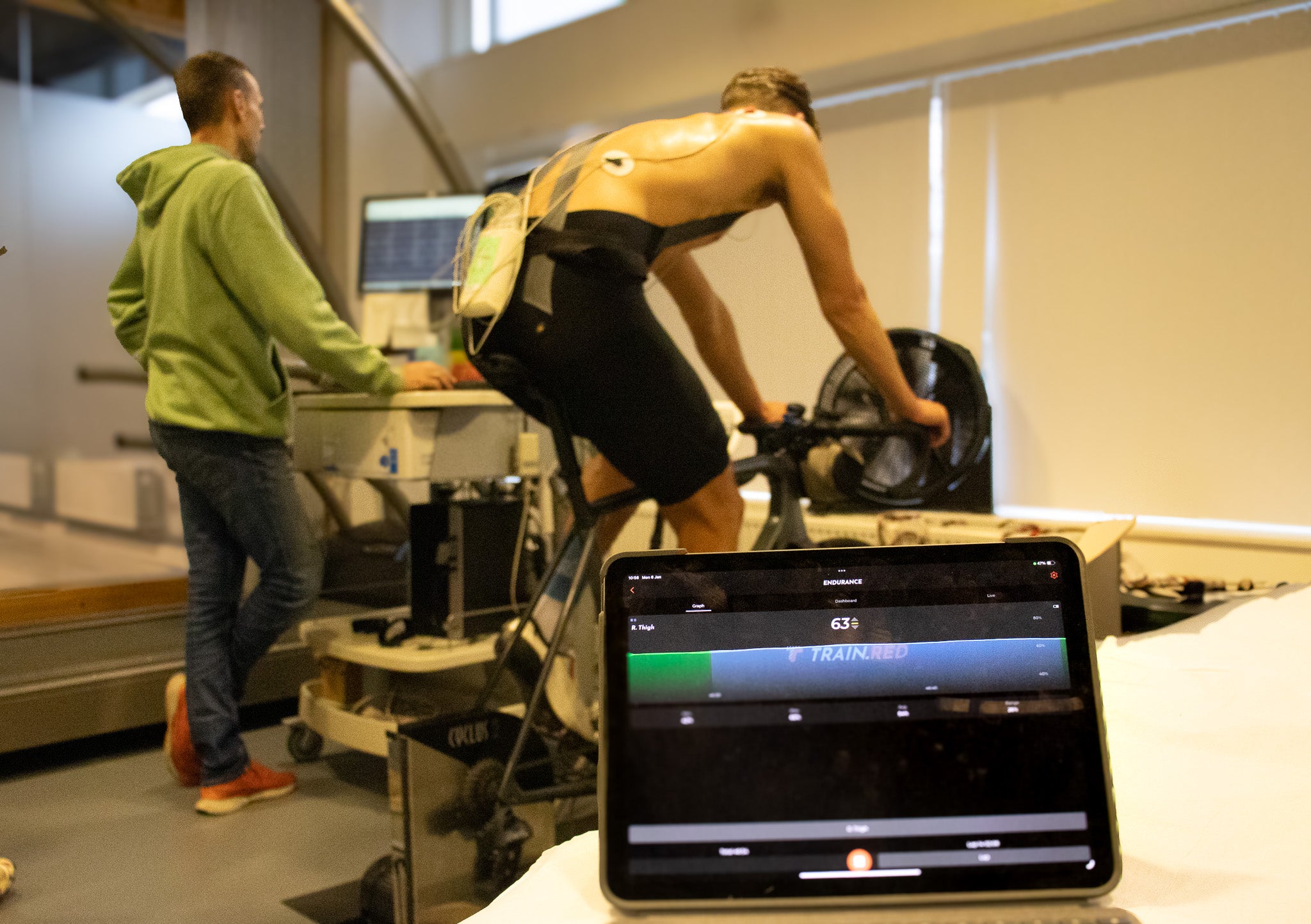
Ramp Test
Muscle Oxygen data can make you a better athlete
Train.Red Features
We translate our data into comprehensive features to help you guide your trainings
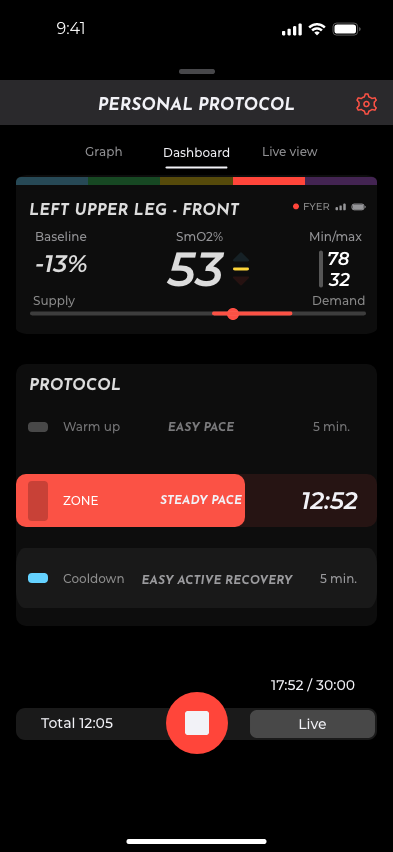
Muscle States
Our smart and adaptive algorithm determines whether your muscle is recovering, working at a light, moderate or hard intensity. It also tells you when your muscles' load is rising.
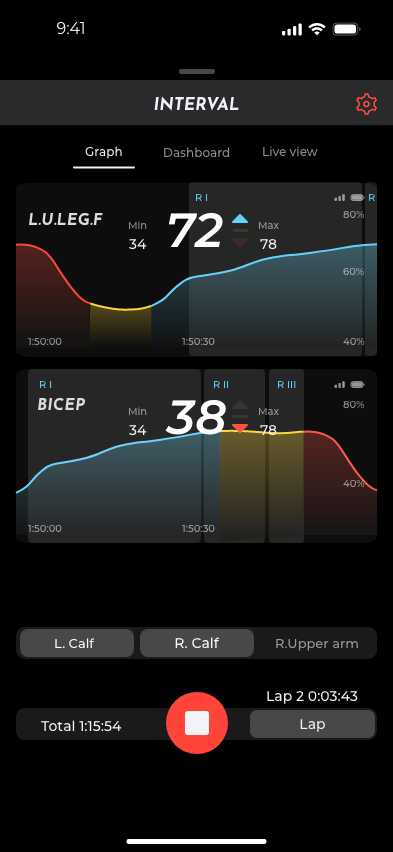
Smart Rest
Rest is important for your training. But how do you know your muscle is ready? Use Train.Red sensors to track your personal recovery during workouts.
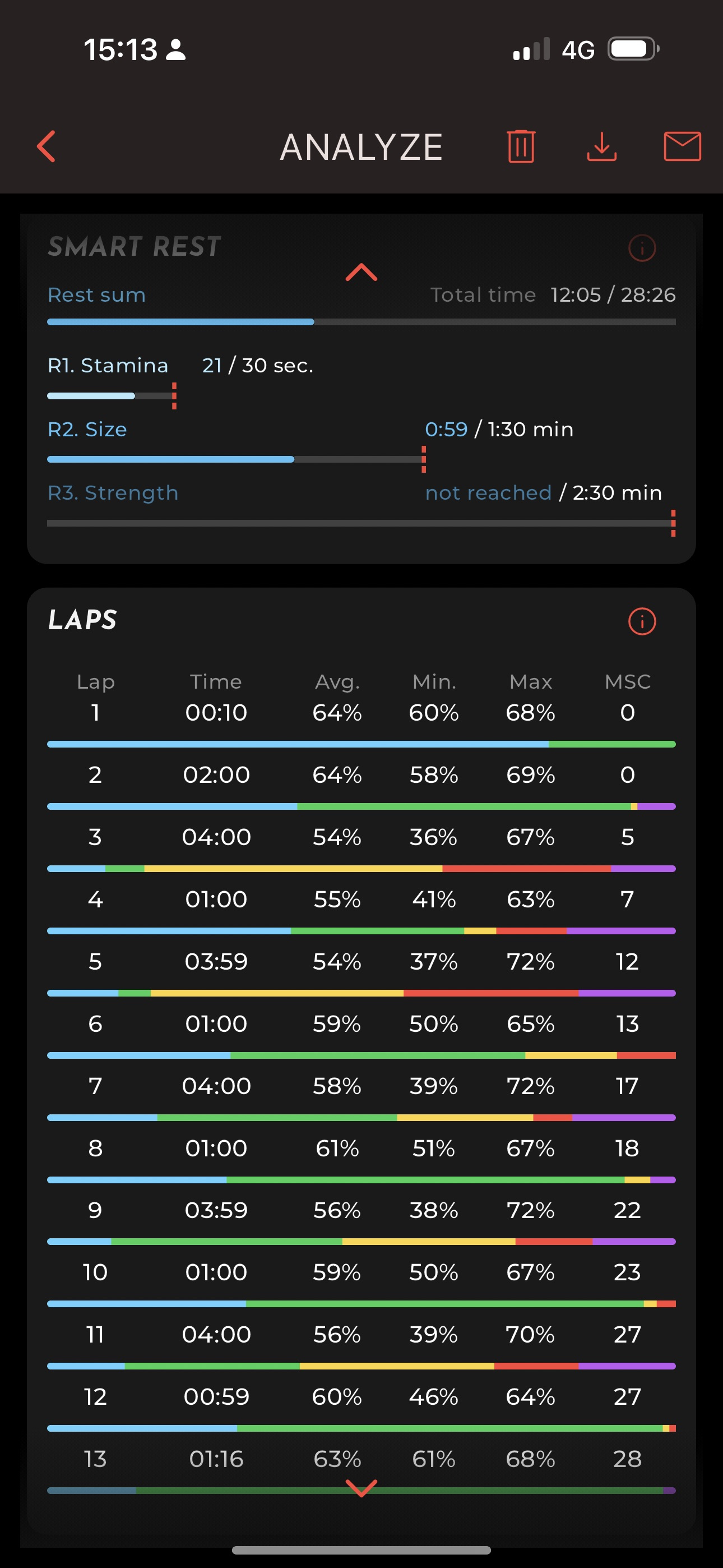
Muscle Stress Score
Muscle Stress Score (MSS) is a quantification of the aerobic stress that is put on the muscle from your training. MSS ic calculated using your hemoglobin data, muscle states and duration.
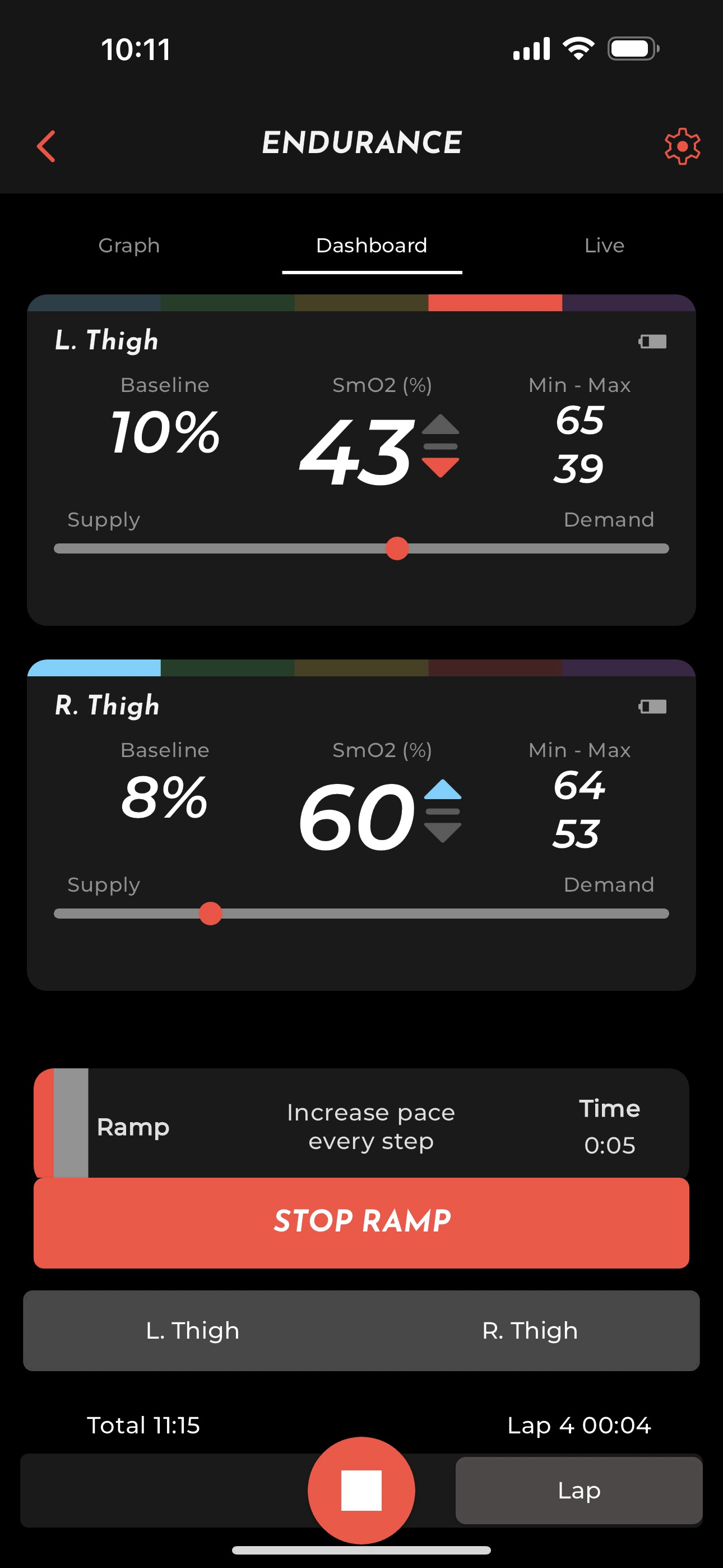
SUPPLY & DEMAND
Controlling the supply and demand of oxygen is essential for pacing your activity
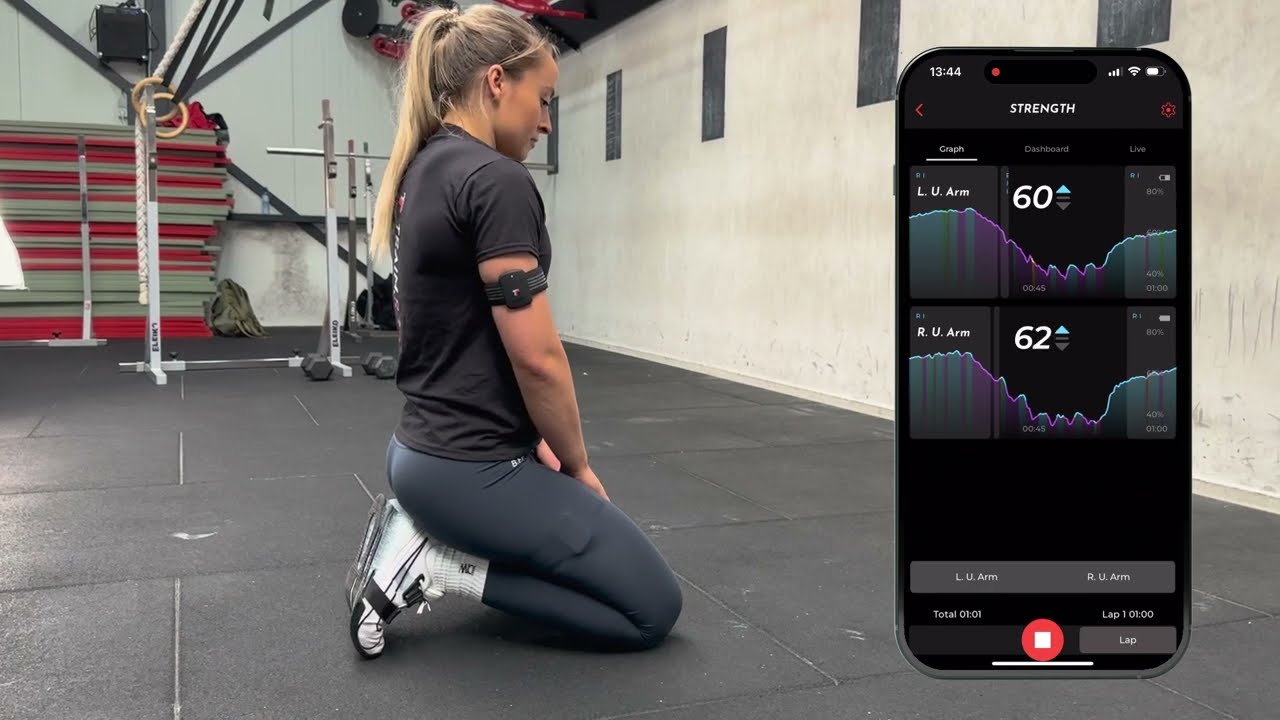


Muscle Oxygen Basics (Online Course)
Learn the science of muscle oxygen from home!
Get access to exclusive video lessons that explain how your muscles use oxygen and how to track it with Train.Red sensors. Includes practical examples and expert insights.
👉 What you get:
✔️ Full webinar-style course
✔️ Video tutorials in shared Drive
✔️ Learn at your own pace


